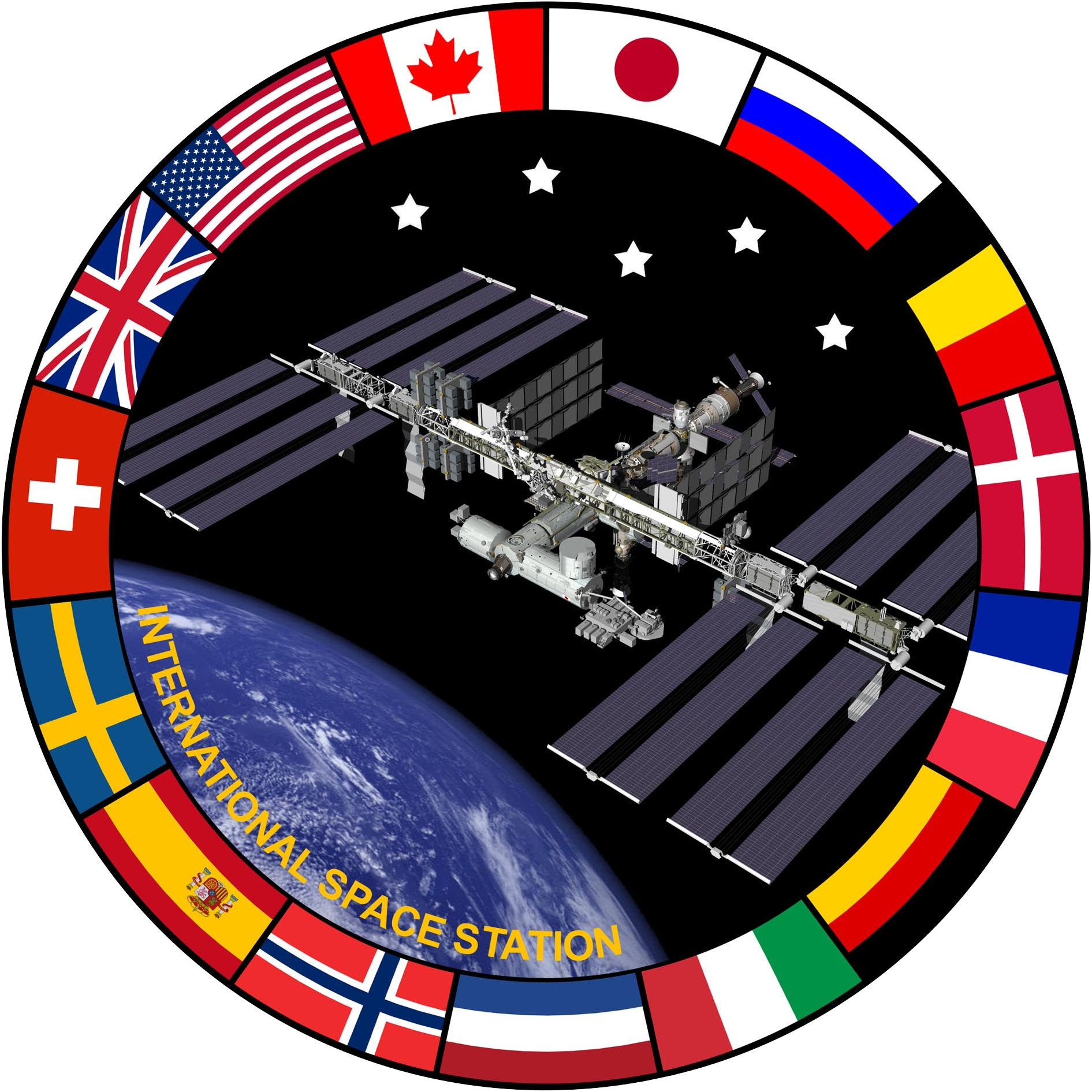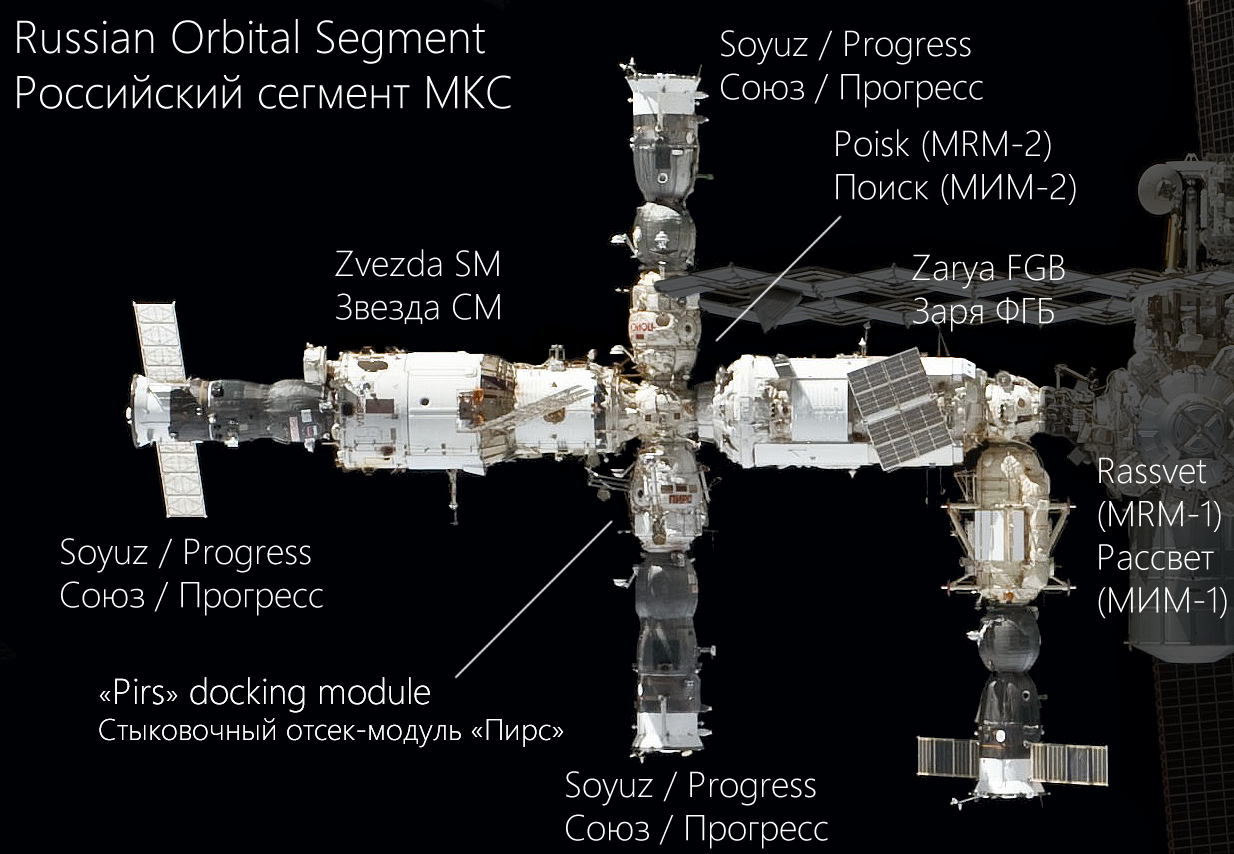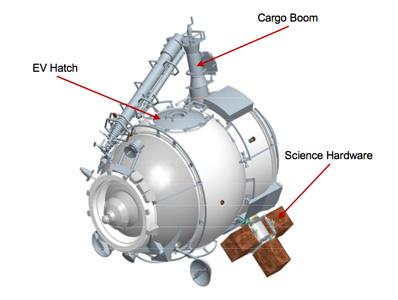|
Prichal
''Prichal'' nodal module also known as Uzlovoy Module or UM (russian: Узловой Модуль "Причал", ''Nodal Module Berth'') is a Russian spacecraft which is part of the International Space Station (ISS). It was approved in 2011 and was launched on 24 November 2021, at 13:06:35 UTC, atop Progress M-UM, with operations beginning in 2022. Originally, the nodal module was intended to serve as the only permanent element of the future Orbital Piloted Assembly and Experiment Complex (OPSEK), but those plans were scrapped in 2017. Description ''Prichal'' is a nodal module that has a pressurized spherical ball-shaped design with six hybrid docking ports. It also has functional components located outside and inside it. The interior of the module is divided into two zones: habitable and instrument with on-board systems. The zenith port out of the six ports is active SSVP-M to allow docking with the space station, while the four ports are passive hybrids of SSVP-M cal ... [...More Info...] [...Related Items...] OR: [Wikipedia] [Google] [Baidu] |
Progress M-UM
Progress M-UM (), was a specially modified Progress M 11F615A55, Russian production No.303, developed by Roscosmos to deliver the ''Prichal'' module to the Russian Orbital Segment (ROS) of the International Space Station (ISS). It was launched on 24 November 2021 at 13:06:35 UTC, along with a Progress M propulsion compartment and has the pressurised cargo module removed to accommodate ''Prichal''. This was the 171st flight of a Progress spacecraft. It was the final flight of a Progress M and the first launch of a Progress spacecraft on a Soyuz 2.1b. Development On 15 January 2011, RKK Energia announced that its Scientific and Technical Council (NTS) had reviewed and approved the preliminary design of the Node Module and associated hardware, including a special version of the Progress cargo ship designated the Progress M-UM spacecraft-module, intended for the delivery of the Node Module to the station. The space payload section for the Progress M-UM was dubbed KGCh. The Soy ... [...More Info...] [...Related Items...] OR: [Wikipedia] [Google] [Baidu] |
International Space Station
The International Space Station (ISS) is the largest modular space station currently in low Earth orbit. It is a multinational collaborative project involving five participating space agencies: NASA (United States), Roscosmos (Russia), JAXA (Japan), ESA (Europe), and CSA (Canada). The ownership and use of the space station is established by intergovernmental treaties and agreements. The station serves as a microgravity and space environment research laboratory in which scientific research is conducted in astrobiology, astronomy, meteorology, physics, and other fields. The ISS is suited for testing the spacecraft systems and equipment required for possible future long-duration missions to the Moon and Mars. The ISS programme evolved from the Space Station ''Freedom'', a 1984 American proposal to construct a permanently crewed Earth-orbiting station, and the contemporaneous Soviet/Russian '' Mir-2'' proposal from 1976 with similar aims. The ISS is the ninth space station to ... [...More Info...] [...Related Items...] OR: [Wikipedia] [Google] [Baidu] |
Iss Before And After Undocking Of Progress M-um From Prichal (cropped)
The International Space Station (ISS) is the largest modular space station currently in low Earth orbit. It is a multinational collaborative project involving five participating space agencies: NASA (United States), Roscosmos (Russia), JAXA (Japan), ESA (Europe), and CSA (Canada). The ownership and use of the space station is established by intergovernmental treaties and agreements. The station serves as a microgravity and space environment research laboratory in which scientific research is conducted in astrobiology, astronomy, meteorology, physics, and other fields. The ISS is suited for testing the spacecraft systems and equipment required for possible future long-duration missions to the Moon and Mars. The ISS programme evolved from the Space Station ''Freedom'', a 1984 American proposal to construct a permanently crewed Earth-orbiting station, and the contemporaneous Soviet/Russian '' Mir-2'' proposal from 1976 with similar aims. The ISS is the ninth space station t ... [...More Info...] [...Related Items...] OR: [Wikipedia] [Google] [Baidu] |
Nauka (ISS Module)
''Nauka'' ( rus, Наука, p=nɐˈukə, litt. ''Science''), also known as the Multipurpose Laboratory Module-Upgrade (MLM-U; Russian: Многоцелевой лабораторный модуль, усоверше́нствованный, or ''МЛМ-У'') or simply Multipurpose Laboratory Module (MLM), is a module of the International Space Station (ISS). The MLM-U is funded by Roscosmos. In the original ISS plans, ''Nauka'' was to use the location of the Docking and Storage Module (DSM). Later, the DSM was replaced by the '' Rassvet'' module and ''Nauka'' was moved from '' Zarya''s nadir port to ''Zvezda''s nadir port. The launch of ''Nauka'', initially planned for 2007, was repeatedly delayed. By May 2020, ''Nauka'' was reported to be planned for launch in the second quarter of 2021, after which the manufacturer's warranties of some of ''Nauka''s components, such as engines, would have expired. ''Nauka'' was finally launched on 21 July 2021, 14:58 UTC, along with the ... [...More Info...] [...Related Items...] OR: [Wikipedia] [Google] [Baidu] |
Orbital Piloted Assembly And Experiment Complex
The Orbital Piloted Assembly and Experiment Complex (russian: Орбитальный Пилотируемый Сборочно-Экспериментальный Комплекс, ''Orbital'nyj Pilotirujemyj Sborochno-Eksperimental'nyj Kompleks''; ОПСЭК, OPSEK) was a 2009–2017 proposed third-generation Russian modular space station for low Earth orbit. The concept was to use OPSEK to assemble components of crewed interplanetary spacecraft destined for the Moon, Mars, and possibly Saturn. The returning crew could also recover on the station before landing on Earth. Thus, OPSEK could form part of a future network of stations supporting crewed exploration of the Solar System. In early plans, the station was to consist initially of several modules from the Russian Orbital Segment (ROS) of the International Space Station (ISS). However, after studying the feasibility of this, the head of Roscosmos stated in September 2017 the intention to continue working together on ... [...More Info...] [...Related Items...] OR: [Wikipedia] [Google] [Baidu] |
SSVP Docking System
Sistema Stykovki i Vnutrennego Perekhoda, SSVP (russian: Система стыковки и внутреннего перехода, ''System for docking and internal transfer'') is a docking standard used by Soviet and Russian spacecraft, sometimes called RDS for ''Russian Docking System''. It has been used on all variants of Soyuz other than the Soyuz 7K-L3 and early flights of the Soyuz 7K-OK, as well as Progress, TKS, ATV, and on all Soviet and Russian space stations. History SSVP was initially conceived in 1967 by the TsKBEM design bureau for use on the then-planned OIS military space station. Though OIS never flew, in 1970 the design was selected for use on the Salyut and Almaz space stations. During its first attempted use on the Soyuz 10 mission, docking was unsuccessful due to a faulty hatch, and a failure in the automatic docking system. This led to a number of redesigns to reduce damage from accidental loads. In the 1980s, SSVP was further upgraded to support docking o ... [...More Info...] [...Related Items...] OR: [Wikipedia] [Google] [Baidu] |
Russian Orbital Segment
The Russian Orbital Segment (ROS) is the name given to the components of the International Space Station (ISS) constructed in Russia and operated by the Russian Roscosmos. The ROS handles Guidance, Navigation, and Control for the entire Station. Current composition The segment currently consists of six modules, which together essentially comprise the base configuration of the cancelled Russian space station ''Mir''-2. The segment is controlled directly from Roskosmos's Mission Control Center in Moscow. The six modules are (in order of launch): * '' Zarya'' (dawn) * ''Zvezda'' (star) * ''Poisk'' (search) * ''Rassvet'' (sunrise, dawn) * ''Nauka'' (science) * ''Prichal'' (berth) The first module, ''Zarya'', otherwise known as the Functional Cargo Block or FGB, was the first component of the ISS to be launched, and provided the early station configuration with electrical power, storage, propulsion, and navigation guidance, until a short time after the Russian service module ... [...More Info...] [...Related Items...] OR: [Wikipedia] [Google] [Baidu] |
Universal Docking Module
The Universal Docking Module (UDM) (russian: Универсальный стыковочный модуль), was a planned Russian docking module for the International Space Station, to be jointly built by RKK Energia and Khrunichev. The ''Prichal'' nodal addition to the ''Nauka'' laboratory, the eventual form of the FGB-2 design upon which the UDM was based, grew out of this proposal. History The original design resembled ''Zarya'' but was larger. It would be docked to the nadir (Earth-facing) '' Zvezda'' service module docking port, and have four docking ports to accommodate the two Russian Research Modules and the SO2 docking compartment, later named '' Poisk''. Because one Russian Research Module was cancelled due to lack of funds, this module was also cancelled. The one remaining Research Module was then scheduled to be fitted to the open docking port on ''Zvezda''. Later it was also cancelled and that port was allocated to the Docking and Cargo Module, later named ... [...More Info...] [...Related Items...] OR: [Wikipedia] [Google] [Baidu] |
Soyuz-2
Soyuz-2 (GRAU index 14A14) is a modernized version of the Soviet Soyuz rocket. In its basic form, it is a three-stage launch vehicle for placing payloads into low Earth orbit. Compared to the previous versions of the Soyuz, the first-stage boosters and two core stages feature uprated engines with improved injection systems. Digital flight control and telemetry systems allow the rocket to be launched from a fixed launch platform, whereas the launch platforms for earlier Soyuz rockets had to be rotated as the rocket could not perform a roll to change its heading in flight. Soyuz-2 is often flown with an upper stage, which allows it to lift payloads into higher orbits, such as Molniya and geosynchronous orbits. The upper stage is equipped with independent flight control and telemetry systems from those used in the rest of the rocket. The NPO Lavochkin manufactured Fregat is the most commonly used upper stage. Soyuz-2 rockets were first launched from Site 31 at the Baikonur Cosm ... [...More Info...] [...Related Items...] OR: [Wikipedia] [Google] [Baidu] |
Poisk (ISS Module)
''Poisk'' (russian: Поиск, , Search), also known as the Mini-Research Module 2 (MRM 2), , or ''МИМ 2'', is a docking module of the International Space Station The International Space Station (ISS) is the largest modular space station currently in low Earth orbit. It is a multinational collaborative project involving five participating space agencies: NASA (United States), Roscosmos (Russia), JAXA .... Its original name was Docking Module 2 (, SO-2), as it is almost identical to the Pirs (ISS module), ''Pirs'' Docking Compartment. Added in 2009, ''Poisk'' was the first major Russian addition to the International Space Station since 2001. ''Poisk'' is overall the same design as the docking module ''Pirs''. Whereas ''Pirs'' had been attached to the nadir ("bottom") port of Zvezda (ISS module), ''Zvezda'', ''Poisk'' is attached to the zenith ("top"); ''Pirs'' was closer to the Earth with the ISS in its usual orientation, and ''Poisk'' is on the other side. ''Poisk' ... [...More Info...] [...Related Items...] OR: [Wikipedia] [Google] [Baidu] |
Nadir
The nadir (, ; ar, نظير, naẓīr, counterpart) is the direction pointing directly ''below'' a particular location; that is, it is one of two vertical directions at a specified location, orthogonal to a horizontal flat surface. The direction opposite of the nadir is the zenith. Definitions Space science Since the concept of ''being below'' is itself somewhat vague, scientists define the nadir in more rigorous terms. Specifically, in astronomy, geophysics and related sciences (e.g., meteorology), the nadir at a given point is the local vertical direction pointing in the direction of the force of gravity at that location. The term can also be used to represent the lowest point that a celestial object reaches along its apparent daily path around a given point of observation (i.e. the object's ''lower culmination''). This can be used to describe the position of the Sun, but it is only technically accurate for one latitude at a time and only possible at the low latitudes. T ... [...More Info...] [...Related Items...] OR: [Wikipedia] [Google] [Baidu] |
Energia (corporation)
PAO S. P. Korolev Rocket and Space Corporation Energia (russian: Ракетно-космическая корпорация «Энергия» им. С. П. Королёва, Raketno-kosmicheskaya korporatsiya "Energiya" im. S. P. Korolyova), also known as RSC Energia (, RKK "Energiya"), is a Russian manufacturer of spacecraft and space station components. The company is the prime developer and contractor of the Russian crewed spaceflight program; it also owns a majority of Sea Launch. Its name is derived from Sergei Korolev, the first chief of its design bureau, and the Russian word for energy. Overview Energia is the largest company of the Russian space industry and one of its key players. It is responsible for all operations involving human spaceflight and is the lead developer of the Soyuz and Progress spacecraft, and the lead developer of the Russian end of the International Space Station (ISS). In the mid-2000s, the company employed 22,000–30,000 people. The ent ... [...More Info...] [...Related Items...] OR: [Wikipedia] [Google] [Baidu] |



_(cropped).jpg)

.png)

